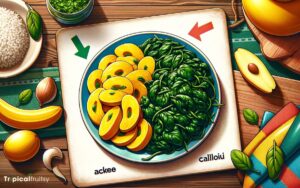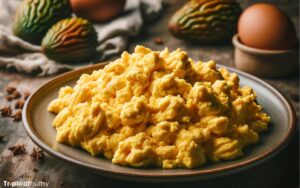When Is Ackee Season in Jamaica? Explained!
In Jamaica, the ackee fruit is not only a national symbol, deeply intertwined with the cultural and culinary fabric of the island, but it is also a seasonal delight.
Ackee season typically peaks twice yearly, with the primary harvest occurring from January to March, and a shorter season from June to August, although this can vary depending on regional climate variations and weather conditions.
Discerning the ideal time for ackee harvesting is crucial, as the fruit must naturally open on the tree to signal ripeness, safeguarding against the toxicity present in immature ackee pods.
This introduction will delve into the intricacies of ackee season in Jamaica, covering the growth cycles, regional differences, and safe harvesting practices to provide a comprehensive understanding of this unique and celebrated aspect of Jamaican agriculture.
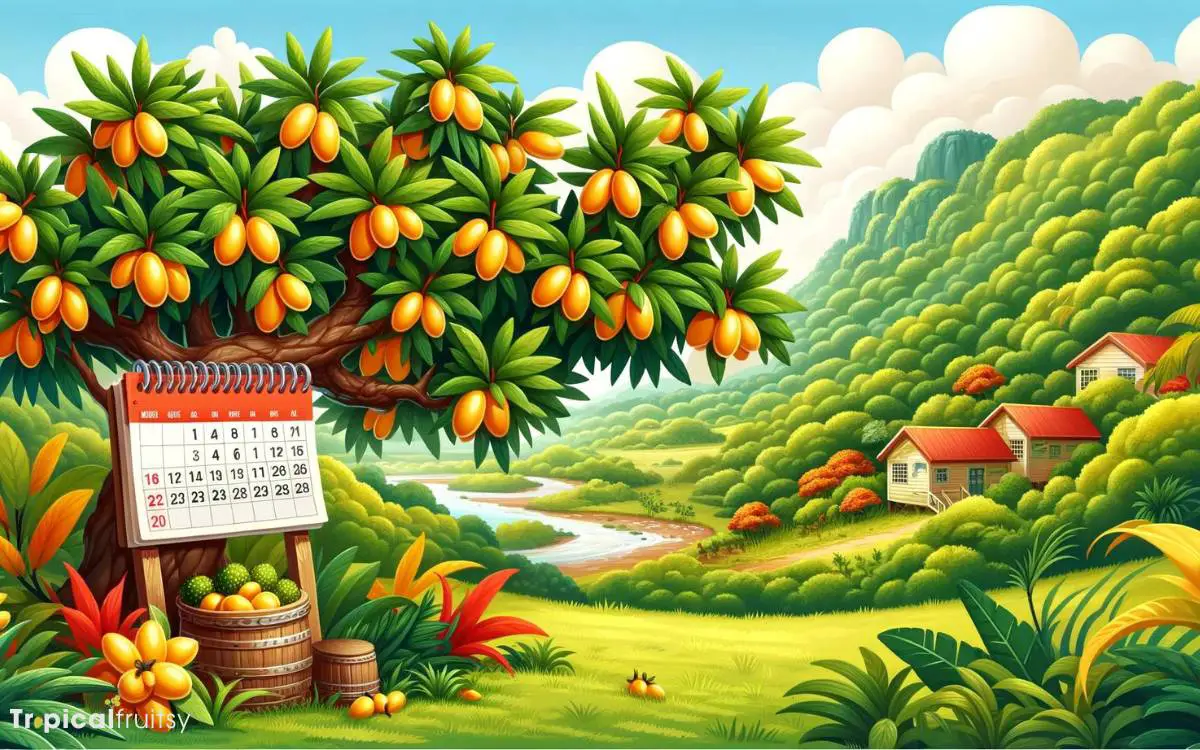
Key Takeaway
Understanding Ackee’s Origins
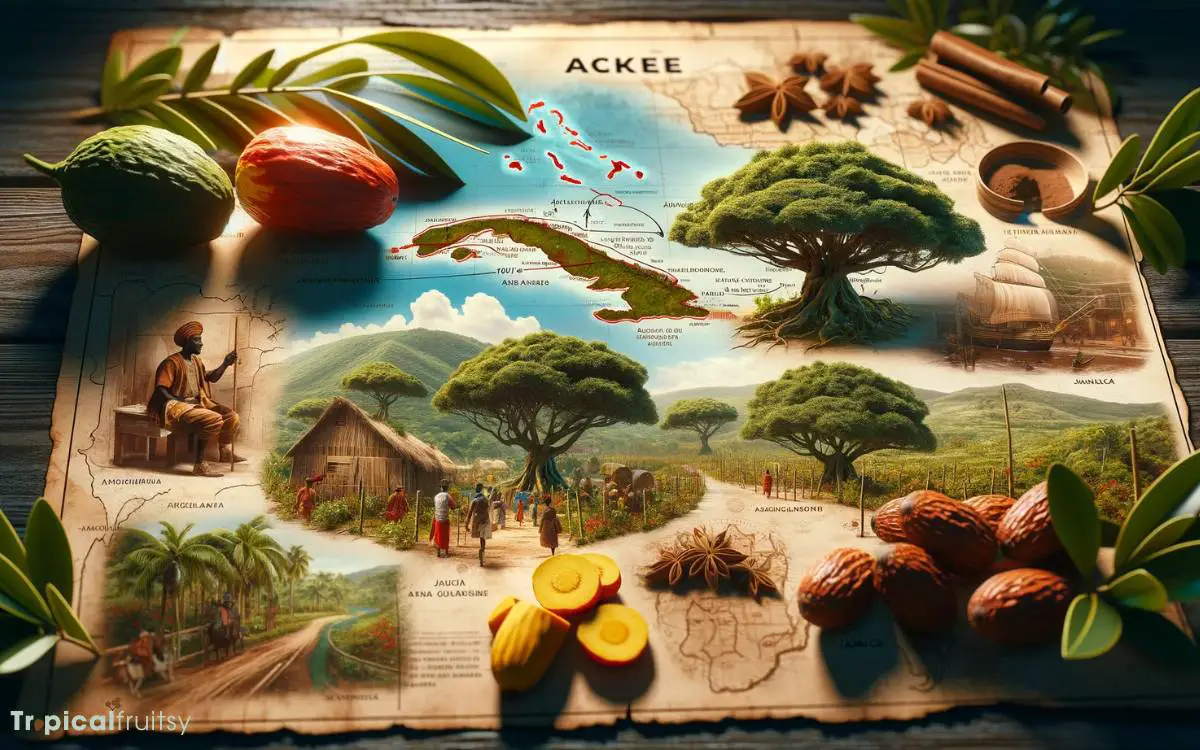
Ackee, an integral part of Jamaica’s culinary heritage, originates from West Africa and was brought to the Caribbean in the 18th century.
This fruit, scientific name Blighia sapida, is not only central to Jamaica’s national dish—ackee and saltfish—but also holds significant botanical and historical interest.
Ackee’s introduction to Jamaica is closely linked to the transatlantic slave trade, where it was transported aboard slave ships destined for the New World.
Its adaptation to Jamaican soil was a complex process, involving acclimatization to a new phyto-geographical environment.
The fruit thrives in the tropical climate of the region, necessitating specific conditions of humidity and temperature to cultivate.
Understanding the origins and horticultural requirements of ackee is pivotal to appreciating its seasonal availability and cultural importance in Jamaican society.
The Typical Ackee Harvest Season
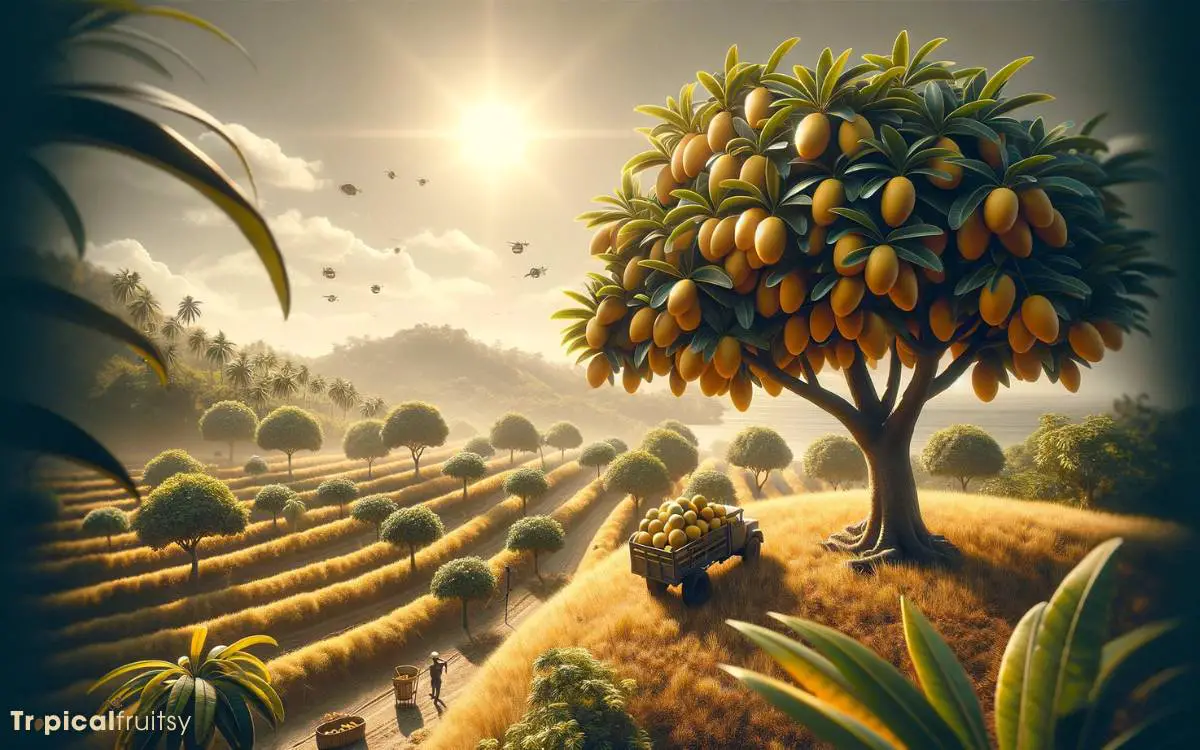
Jamaica’s ackee harvest season typically spans from January to March and then again from June to August, aligning with the fruit’s maturation cycles in the island’s tropical climate.
This periodization is critical for maximizing yield and ensuring the highest quality of ackee fruits, which are a staple in Jamaican cuisine.
To elucidate the seasonality and its implications, consider the following table:
| Month | Harvest Status | Notes |
|---|---|---|
| January | Beginning of primary season | Optimal freshness and abundance |
| February | Peak of primary season | High market availability |
| March | End of primary season | Last harvests before off-season |
| June | Start of secondary season | Renewed harvesting |
| July-August | Peak to end of season | Consistent supply available |
The cyclical nature of ackee’s availability underscores the importance of understanding these harvest windows to stakeholders, including farmers, exporters, and consumers, ensuring a sustainable and profitable ackee industry in Jamaica.
Ackee Cultivation and Growth Cycles
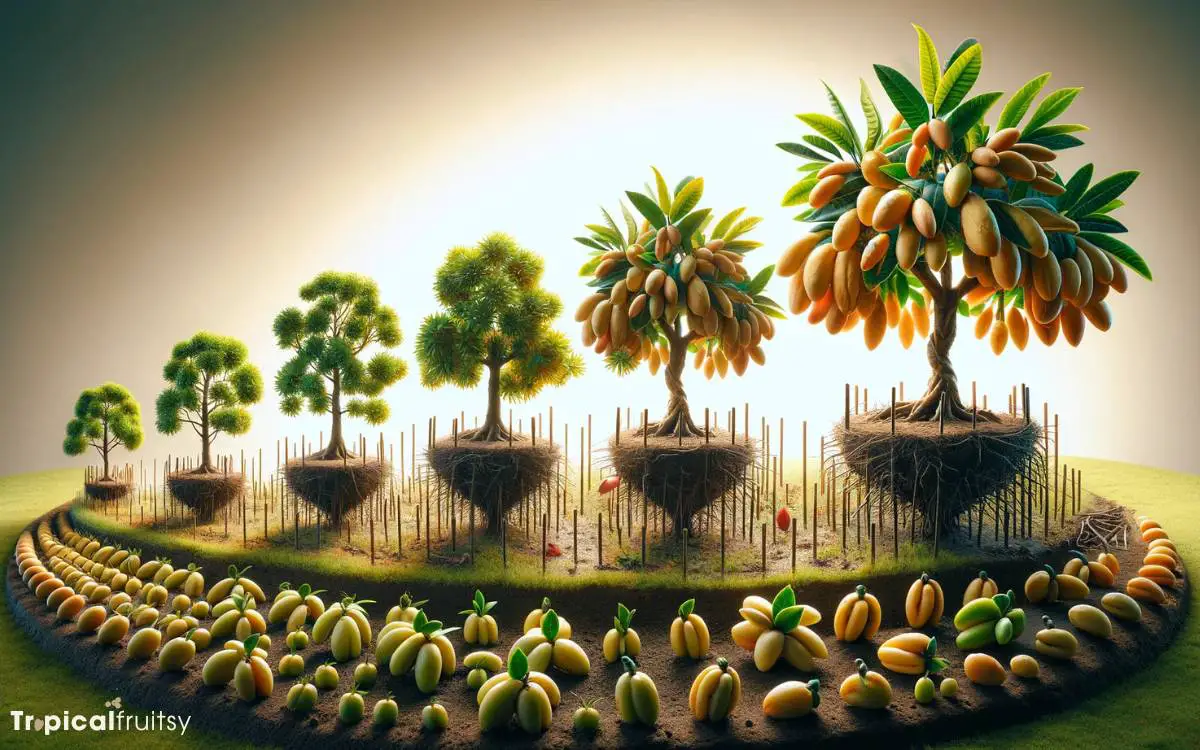
Ackee cultivation requires a nuanced understanding of the plant’s growth cycles and optimal harvesting periods to ensure yield maximization.
The climate plays a pivotal role in the growth of ackee, with specific temperature and rainfall patterns directly influencing the fruiting timeline.
An analysis of regional climate variations is therefore essential for predicting the harvesting timeframe and for the strategic planning of cultivation efforts.
Harvesting Timeframe
The primary harvesting season for ackee in Jamaica typically spans from January to March and then again from June to August, aligning with the fruit’s biannual growth cycles.
This period is critical for ackee production, as it is when the fruit reaches its optimal ripeness for both local consumption and export.
The following points are essential for understanding the harvesting timeframe:
- Climatic Influence: The slight variations in local climate can affect the exact timing of ackee fruit ripeness, necessitating close monitoring by cultivators.
- Maturity Indicators: Harvesting is predicated on visual cues; ackee pods must naturally open on the tree to indicate maturity, as premature harvesting can lead to toxicity.
- Market Demand: Peak harvesting periods are dictated by market demand, with adjustments made to maximize yield and profitability in alignment with consumer needs.
Climate Impact Growth
Climatic conditions in Jamaica play a pivotal role in the cultivation and growth cycles of ackee, directly influencing the timing and yield of this biannual fruit crop.
The island’s tropical climate, characterized by a wet season from May to November and a dry season from December to April, dictates the primary periods of ackee flowering and fruiting.
| Climate Factor | Impact on Ackee Cultivation | Growth Cycle Stage Affected |
|---|---|---|
| Temperature | Optimal growth at 25-30°C | Flowering and Fruiting |
| Rainfall | Adequate moisture necessary | Flowering |
| Humidity | High humidity aids growth | Fruiting |
| Seasonality | Biannual cycles | Harvesting |
An analytical examination of these factors reveals that temperature and moisture levels are particularly critical during the initial flowering phase, while humidity becomes more influential during fruit development.
Understanding these growth cycles is essential for optimizing ackee production. With this knowledge, one can also discern the signs of ripeness in ackee, which is the next crucial topic of discussion.
Signs of Ripeness in Ackee
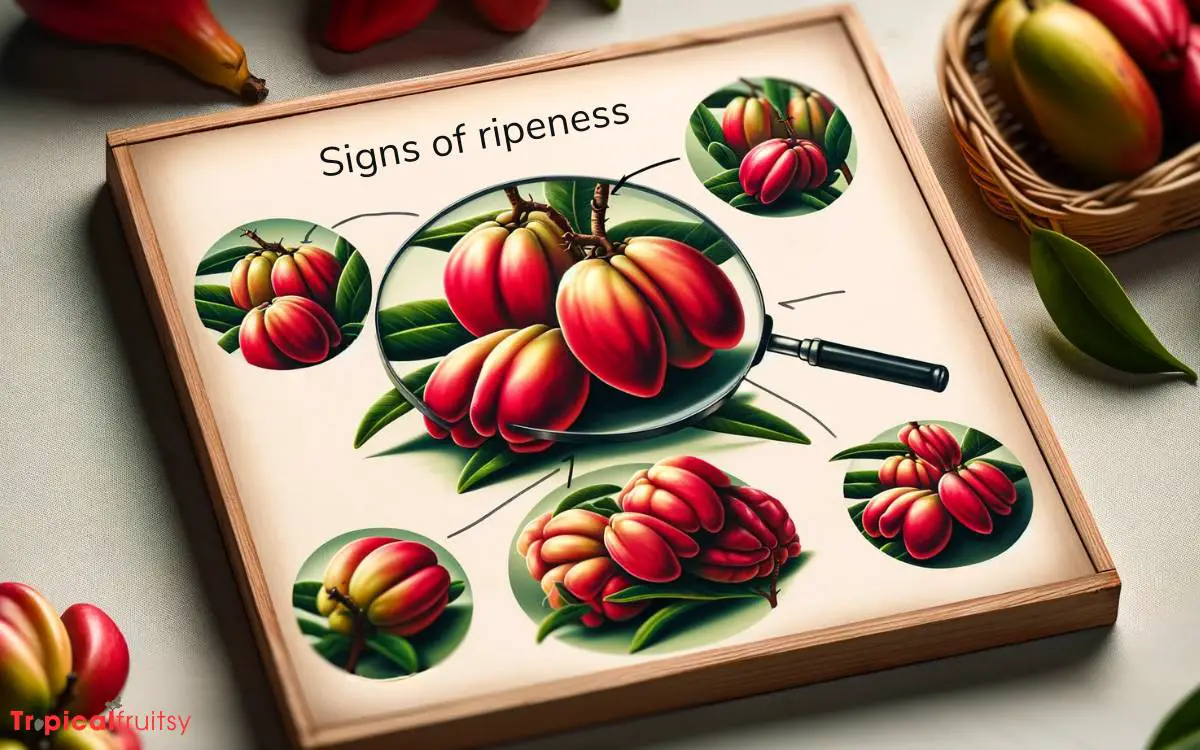
While ackee is in season, it is crucial to identify the fruit’s ripeness, which is indicated by the natural splitting of its bright red pods, revealing the black seeds and yellow arilli inside.
For consumers and cultivators alike, recognizing the optimal stage for harvest is paramount.
The following are key indicators of ripeness:
- Pod Opening: A ripe ackee will have pods that split open naturally. Forced opening can lead to exposure to hypoglycin A, a toxic substance.
- Coloration: The inner lining of the pod transforms from white to a vibrant red, while the edible arilli turn from pale to a rich yellow.
- Seed Exposure: Black, glossy seeds become visible amidst the yellow flesh, signifying readiness for consumption.
Acknowledging these signs ensures safety and quality. Next, we will examine regional variations in ackee season, which can influence the fruit’s availability and ripeness.
Regional Variations in Ackee Season
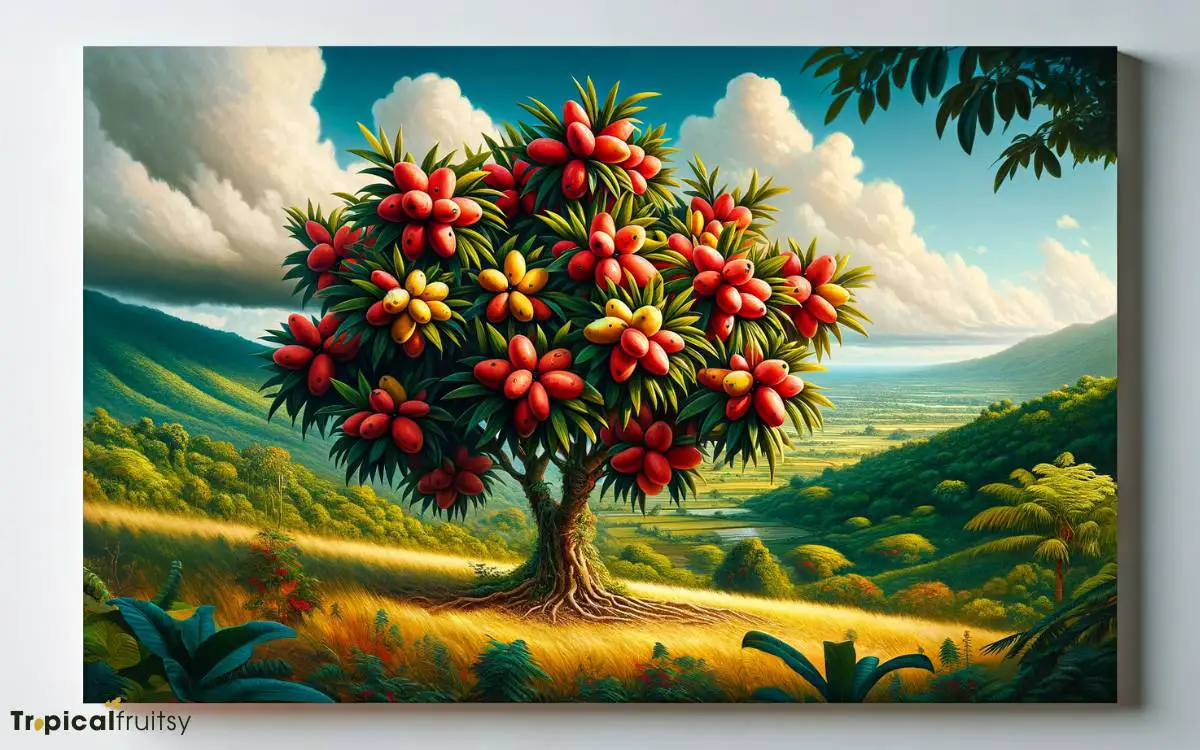
Ackee season in Jamaica exhibits significant variation across different regions, influenced by microclimates and elevation.
The island’s topography creates numerous microclimates which consequentially affect the fruiting periods of ackee trees.
Coastal areas, with their generally warmer climate, may experience an earlier onset of ackee season compared to the cooler, elevated interior regions.
For instance, ackee trees at lower elevations along the coast may bear ripe fruit as early as December or January, while those in the higher areas of the Blue Mountains may not yield mature ackee until several weeks later.
Such disparities necessitate a localized understanding of ackee phenology for optimal harvest scheduling. Agronomists and farmers closely monitor temperature, rainfall, and other climatic factors to predict regional variations in ackee crop availability.
Ackee Picking Do’s and Don’ts
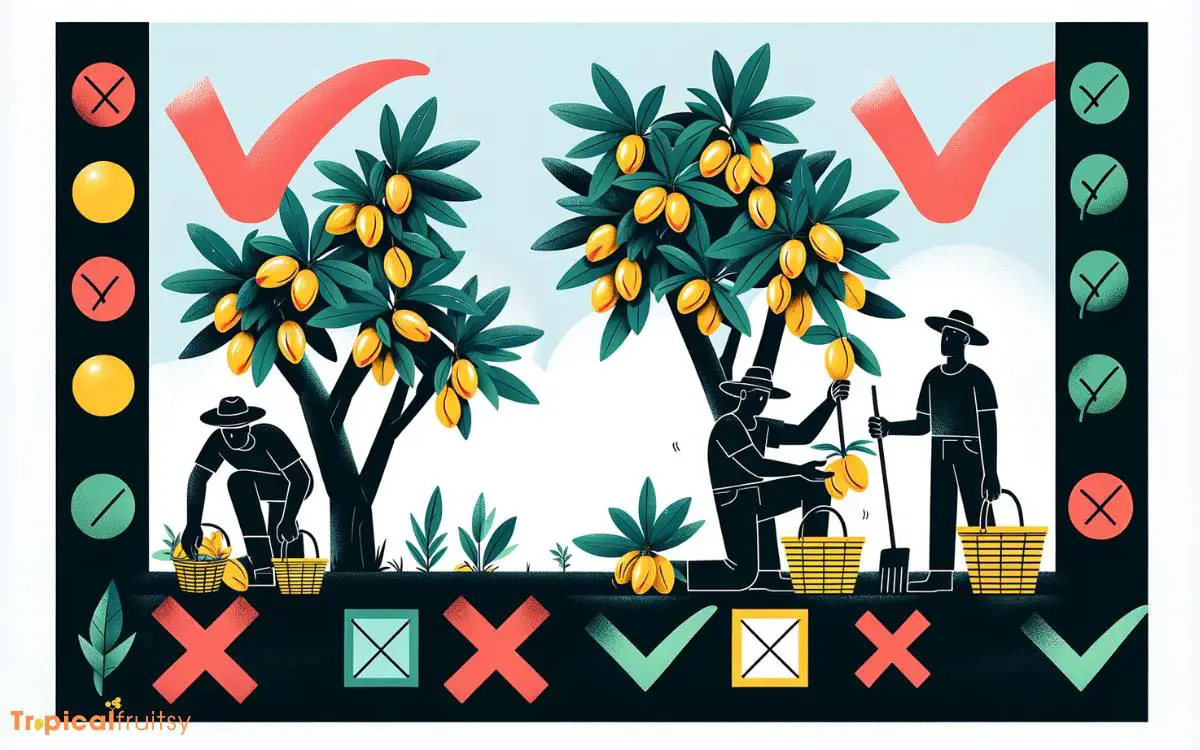
Acknowledging the optimal stage of ackee ripeness is critical; only naturally opened ackee fruits are safe for consumption, as premature harvesting may lead to toxicity.
Harvesting safety tips are paramount, including the use of appropriate tools and techniques to avoid injury and ensure the integrity of the fruit.
Moreover, implementing proper storage practices post-harvest is essential to maintain the fruit’s edibility and nutritional value, considering ackee’s sensitivity to environmental factors.
Identify Ripe Ackee
Harvesting techniques for ackee, Jamaica’s national fruit, necessitate careful adherence to ripeness indicators to ensure both safety and culinary quality.
The unripened ackee contains toxic hypoglycin A, which can lead to Jamaican Vomiting Sickness; therefore, determining the precise moment of ripeness is crucial.
An analytical approach to identifying ripe ackee involves several observational criteria:
- The ackee fruit must naturally open on the tree, revealing black seeds and a yellow aril; a forcibly opened ackee is not safe for consumption.
- The opened ackee should emit a distinct, fragrant aroma, indicating maturity.
- The texture of the aril must be firm to the touch and free from any signs of decay or infestation.
These parameters are essential for the safe and optimal utilization of ackee in culinary applications.
Harvesting Safety Tips
Considering the potential health risks associated with improperly harvested ackee, it is imperative to follow stringent safety guidelines when picking this fruit.
Harvesters must ensure that the ackee pods have naturally opened on the tree, indicating maturity and a reduction in the concentration of toxic hypoglycin A.
It is crucial to avoid forcibly opening the pods, as unripe ackee contains higher levels of the toxin, which can lead to Jamaican Vomiting Sickness.
Additionally, the arils—the edible portions—should be vibrant red to yellow-orange in color, firm to the touch, and free from decay or infestation. It is also advisable to wear gloves and protective clothing to prevent skin irritation from the sap.
Properly trained personnel should perform the harvesting to minimize the risk of toxin exposure and ensure consumer safety.
Proper Storage Practices
Once the ackee is safely harvested, it is essential to implement correct storage methods to maintain its quality and ensure its safety for consumption.
The following practices are critical:
- Store unripe ackee pods at room temperature away from direct sunlight to allow them to ripen naturally.
- Refrigerate ripe ackee arils (the edible portion) in airtight containers to prevent moisture accumulation and microbial growth.
- Freeze ackee arils if not used within a few days to preserve their nutritional value and prevent spoilage.
Adhering to these guidelines is paramount to inhibit the development of toxins and to safeguard against potential foodborne illnesses.
These technical measures are as important as the cultural practices. This analytical approach to storage ensures that the vibrant ackee season can be celebrated safely and joyously in Jamaica.
How Does Ackee Season in Jamaica Impact the Availability of Ackee for Cooking?
During ackee season in Jamaica, the availability of ackee for cooking increases significantly. This fruit is essential for creating traditional Jamaican dishes like ackee and saltfish, a beloved flavor of the taste of the Caribbean. Locally sourced ackee provides a fresher and more authentic taste to the dishes.
Celebrating Ackee Season in Jamaica
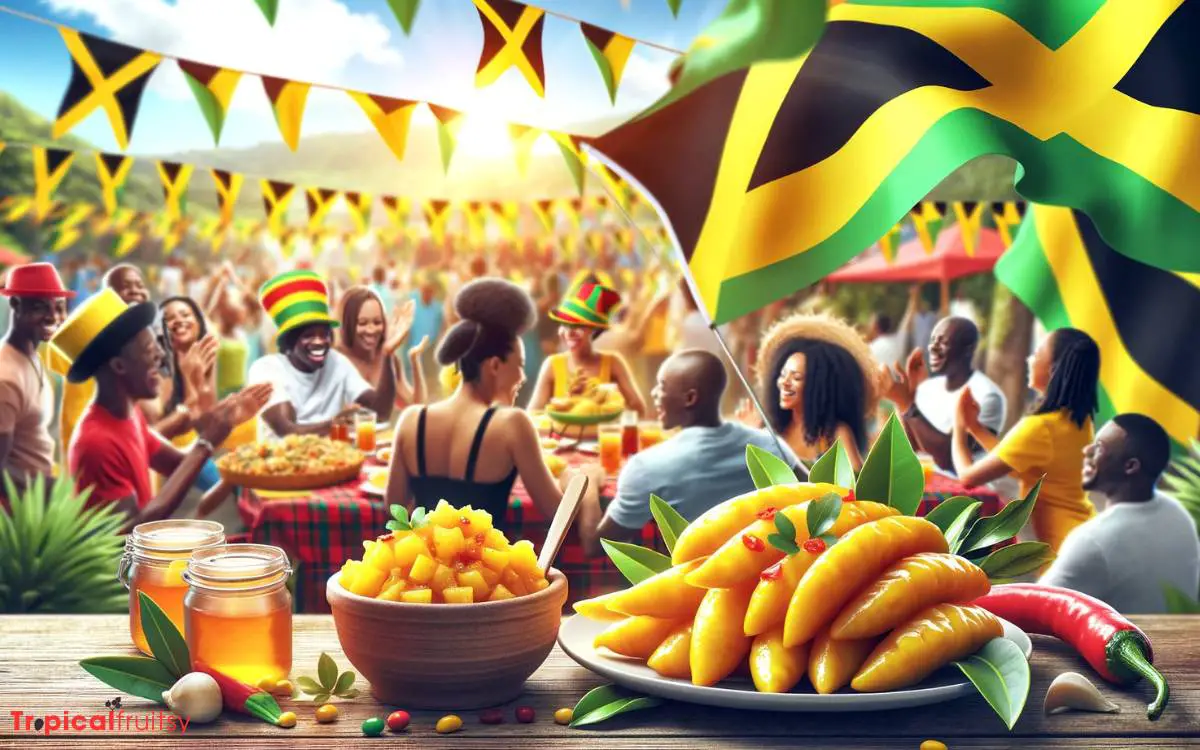
In Jamaica, the ackee season is not only a time for harvest but also for vibrant cultural festivities that underscore the fruit’s significance to the island’s heritage.
The celebration is marked by a series of events that highlight both the culinary and historical aspects of ackee.
The table below summarizes key components of the season’s celebration:
| Aspect | Description | Significance |
|---|---|---|
| Culinary Events | Competitions, cooking demonstrations | Showcase ackee’s versatility in cuisine |
| Cultural Significance | Ackee related music, dance performances | Reinforces ackee’s role in Jamaican identity |
| Educational Components | Workshops on ackee cultivation, history | Enhances understanding of ackee’s botanical and cultural aspects |
| Community Impact | Local markets, tourism boost | Stimulates economic activity, promotes cultural exchange |
Analyzing the celebration from a technical standpoint, each dimension contributes to a holistic appreciation of ackee, reinforcing its value beyond mere sustenance to a symbol of national pride and community cohesion.
Conclusion
In the tapestry of Jamaican agriculture, the ackee season emerges as a vibrant thread, symbolizing cultural richness and gastronomic tradition.
This period, typically spanning from January to March and again from June to August, marks a time when the fruit’s ripeness signals readiness for harvest, reflecting the island’s rhythmic interplay between nature and nourishment.
As ackee adorns the markets, it serves as a testament to Jamaica’s agricultural calendar, a cyclic reminder of the island’s culinary heartbeat.

